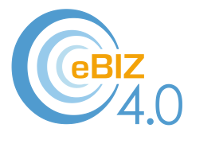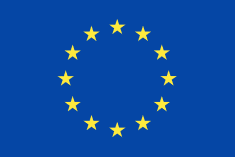![[PRECEDENTE]](/ebiz/images/but_previous.gif)
![[INDICE]](/ebiz/images/but_up.gif)
![[SUCCESSIVA]](/ebiz/images/but_next.gif)
![[PRINT]](/ebiz/images/but_print.gif)
|
Definition of Terms
|
The following terms have been used to provide consistency throughout this document. They have been used in connection with various aspects of the complex supply chain in the sectors and some of the relevant terms used in eBusiness. Textile/Clothing SectorThe Textile/Clothing sector comprises those defined in the NACE Revision 1.1 classification as Group 17 “The Manufacture of Textiles” and Group 18 “The manufacture of wearing apparel; dressing; dyeing of fur” Footwear SectorThe Footwear sector is defined as Group 19.3 of the NACE classification “Manufacture of footwear” TCF SectorsThe term “TCF sectors” is used when referring to the combined Textile/Clothing and Footwear sectors. ProducerThe term “producer” is used when referring to an enterprise that is transforming materials either into a finished product or by adding value in some other way. Value can be added either by transforming materials into component parts of finished products, or by performing processes applied to component parts or finished products. The actual transformation may be done by the producer or by a sub-contractor. CustomerThe term “customer” is used when referring to an organisation purchasing from producers. SupplierThe term “supplier” is used when referring to an enterprise that supplies materials, parts, processes used in manufacturing (such as printing and dyeing) or when referring to sub-contractors who supply finished products to producers. DownstreamThe term “Downstream” is used when referring to that part of the supply chain between producers of finished products and their customers (normally retailers). UpstreamThe term “Upstream” is used when referring to that part of the supply chain between producers of a finished product and their suppliers of materials, component parts and processes used in manufacturing products. It is also used when referring to the whole of the supply chain involving the sub-contracting of finished products and the sub-contracting of materials and component parts or of processes used in manufacturing products. It can be seen from this definition that there are both Producer-Customer relations and “Producer-Supplier” relations in the upstream chain. eBusinessGenerally, the term “eBusiness” can be applied to a number of different facets of ICT ranging from integration and improving the efficiency of the supply chain to improving the efficiency of development and production processes and to innovation in marketing and sales both to business and consumers. In this document, the term is limited to supply chain related electronic exchange of data or documents in the business to business (b2b) environment, covering both the upstream and downstream parts of the chain Formal StandardThe term “formal standard” is used when referring to specifications that comply with the definition in Directive 98/34/EC:- “a technical specification approved by a recognised standardisation body for repeated or continuous application, with which compliance is not compulsory” Local StandardThe term “local standard” is used when referring to specifications developed through collaboration and cooperation between partnerships of various sizes. These may either be local to one region or be cross-border Proprietary StandardThe term “proprietary standard” is used when referring to specifications developed by a single enterprise to satisfy its own particular requirements. Traditional EDI MessagesThe term “traditional EDI messages” is used when referring to data in business documents or messages using any syntax other than XML. The most common of these are EDIFACT messages but the term is used to also cover EANCOM, X12 and TRADACOM and similar message formats as well as messages that are not compliant with a formal standard. |
Risorse | ||
|
||
![[PRECEDENTE]](/ebiz/images/but_previous.gif)
![[INDICE]](/ebiz/images/but_up.gif)
![[SUCCESSIVA]](/ebiz/images/but_next.gif)
![[PRINT]](/ebiz/images/but_print.gif)
|







